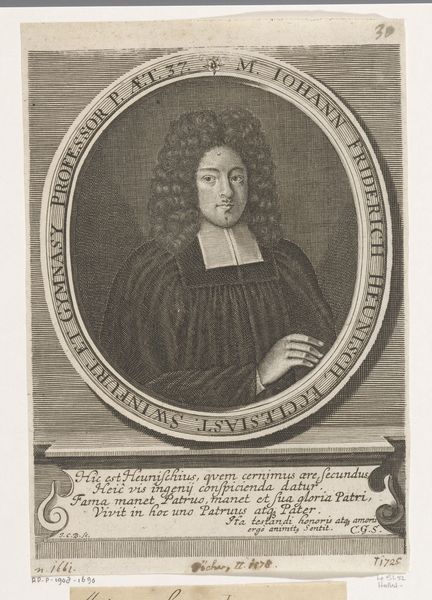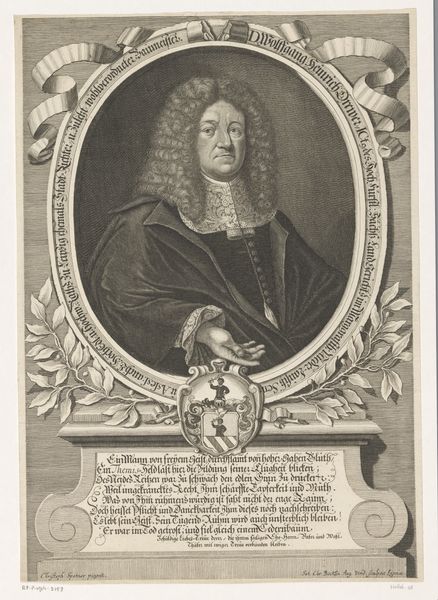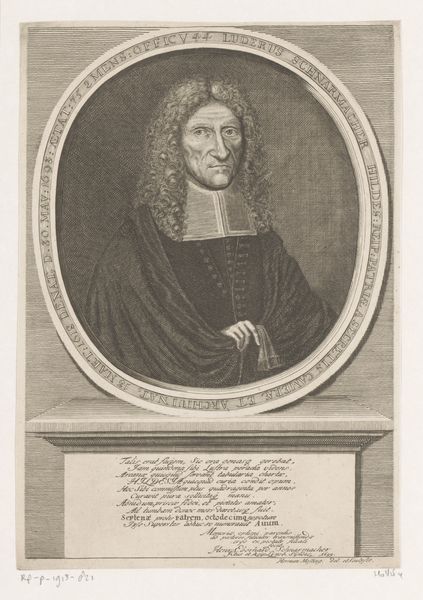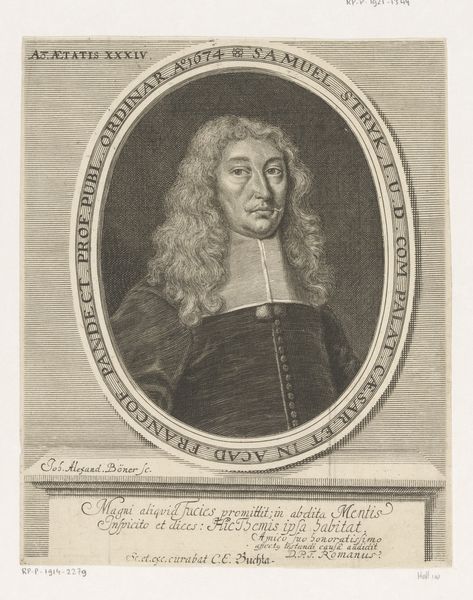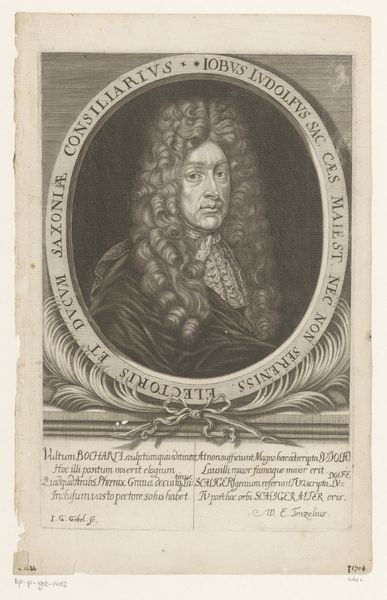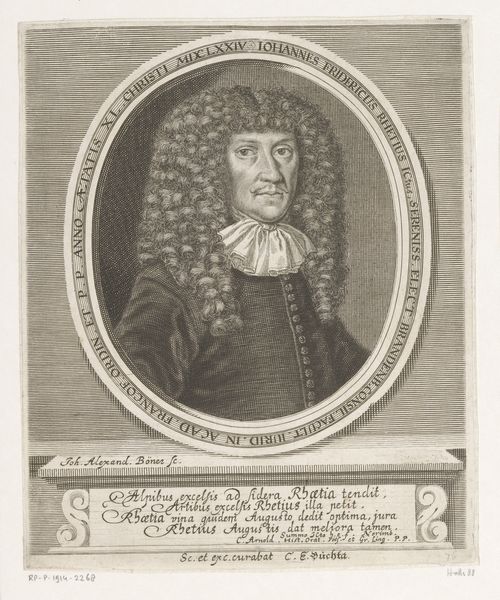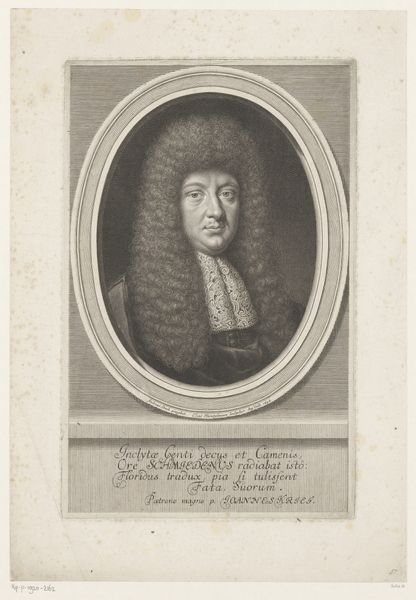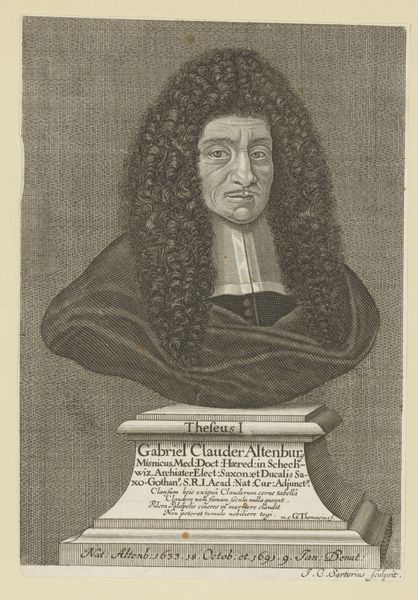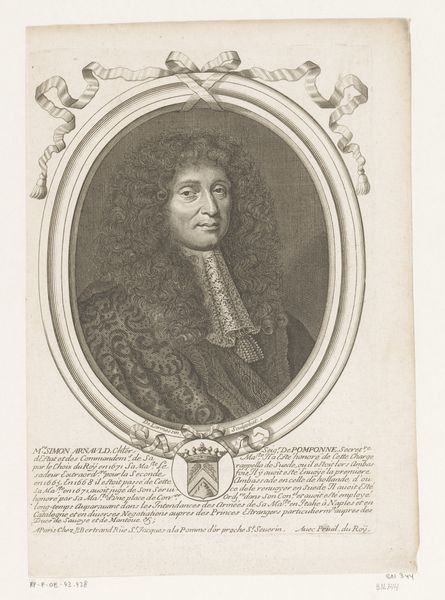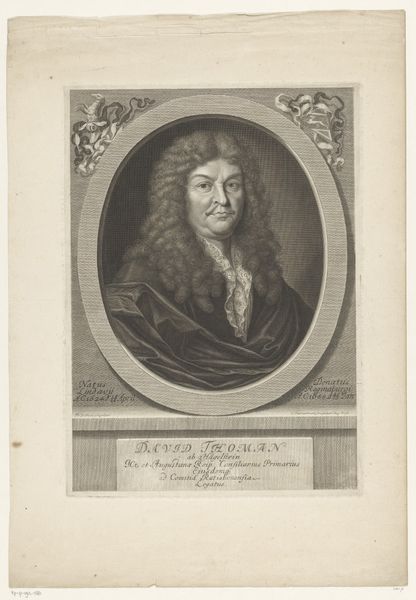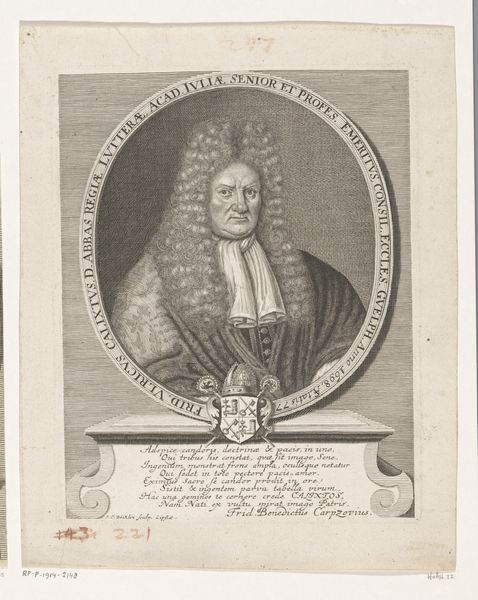
Dimensions: height 316 mm, width 184 mm
Copyright: Rijks Museum: Open Domain
Johann Christoph Boecklin created this print, *Portret van Romanus I Teller*, sometime in the late 17th or early 18th century. It’s made from paper using an engraving technique, which involves cutting lines into a metal plate, applying ink, and then pressing the paper onto the plate to transfer the image. The linear quality you see is a direct result of this process. Notice how the lines create shading and texture, defining Teller’s features, his elaborate wig, and the folds of his clothing. The precision required for engraving meant a highly skilled artisan. Prints like this were a crucial medium for disseminating images and ideas, acting as a form of visual communication in a pre-photographic era. The inscription below the portrait, along with the surrounding text, suggests this print served a commemorative function. Consider how this detailed, reproducible image connects to broader issues of labor, class, and consumption. It’s not just a portrait, but a product of skilled labor, intended for circulation and consumption within a specific social context. Appreciating the material and making of this print helps us move beyond just seeing a portrait, and towards understanding its place in a wider cultural landscape.
Comments
No comments
Be the first to comment and join the conversation on the ultimate creative platform.

